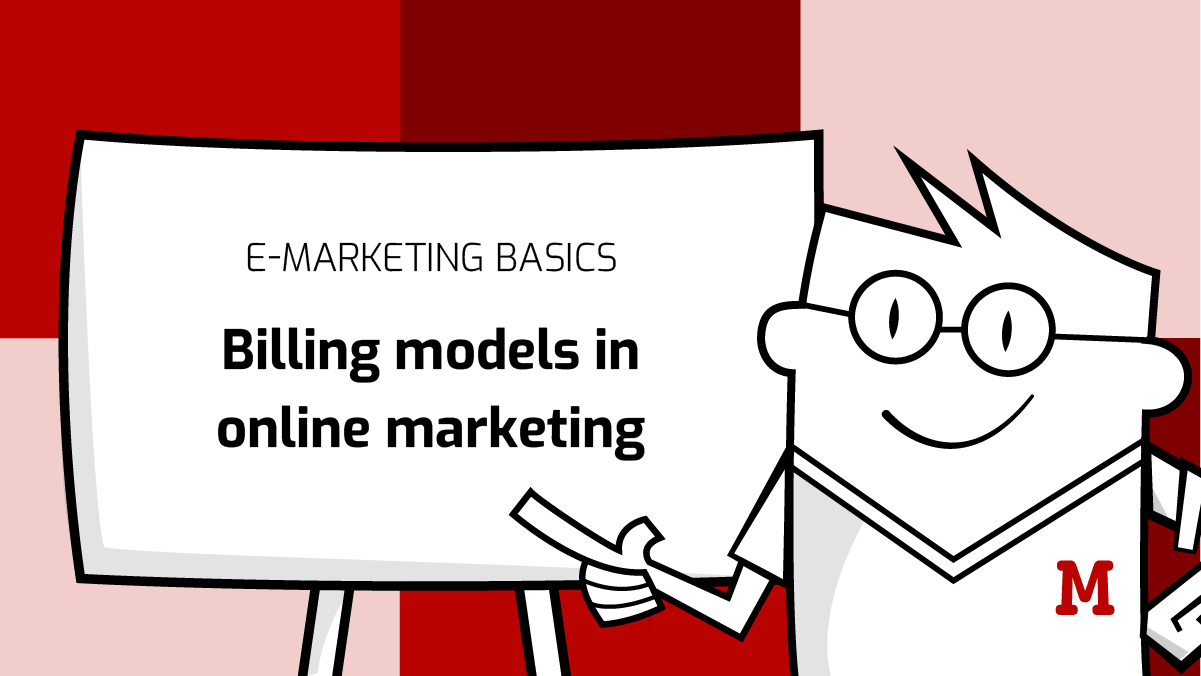Billing models in online marketing

As we all know, there are many different services and products in digital marketing, from ads through sponsored posts to marketing tools. Each form of marketing activity comes with specific pricing/billing models. In this article, we are going to show you the most popular ones. Let’s see what you’re actually paying for!
Let’s say you run an online store and want to benefit from multiple marketing activities. So, you buy ads on Facebook and Google, work with an SEO consultant, have a subscription for an email marketing tool, and buy and publish guest posts on different websites. Each of these activities can be beneficial for your business. However, you have to understand how they are billed. This way, you can maintain full control over your budget and track ROI (return on investment). Let’s get down to specifics.
How are ads billed?
Typically, online advertising systems such as Google Ads, Facebook Ads, and LinkedIn Ads are based on auctions. You bid against other participants, and the more you’re willing to pay for your ad, the more often it’s being shown. When it comes to prices, though, there are five common billing models.
- CPC: That’s by far the most popular billing model. This acronym stands for Cost Per Click. You are charged every time someone clicks your ad or link.
- CPM: Cost Per Mille. In this model, you are charged for every 1,000 impressions of your ad (or website, or post)
- CPV: Cost Per View. This model is popular in video marketing, and it works, e.g., on YouTube. Every time someone watches your sponsored video, you’re charged.
- CPS: Cost Per Sale. This model is sometimes used in e-commerce. You are billed every time you sell a product.
- CPA: Cost Per Action. This model is a bit different than others because you have to specify first what kind of action you’re after. If you want more signups for the newsletter, CPA can be a good option. In general, “action” refers to a specified activity performed by your potential customer, for example, downloading an ebook, sending an inquiry, making a reservation, or completing a survey.
Of course, not every platform has all these models on their offer. Before you opt for a specific service, find out how you will be billed. All these forms are commonly used in performance marketing because in this marketing strategy, you pay for a specific result. Here, you can read more about Google pricing models and here about Facebook pricing models.
How are marketing services billed?
Suppose you want to work with a copywriter or with an SEO agency. How will they calculate their services? Of course, there can be some differences based on the shape of the service you’re after or the country, but you’re usually billed either for the time (per-hour basis) or for the result. That’s how copywriters work. You can work with them on a per-hour basis, per-word basis (you are charged for every word they write for you), or per-result basis (e.g., when you order a name for your new brand, you won’t be charged per word, but rather based on a lump sum).
It’s the same story with SEO and SEM services. The more you want the agency or consultant to do for you every month, the more you have to pay. SEO services are frequently billed on a per-hour basis or under one constant lump sum (subscription) per month. When it comes to SEM services, you are usually charged a percentage of your marketing budget. For example, if you’re looking for a Google Ads agency and you tell them that you want to spend $2,000 each month for ads, they will charge around 20% of your budget, so the fee you have to pay for such a service will be around $400 (some agencies set the minimum fee they charge if your budget is too low).
Again, remember that this is not a closed catalog of settlement forms. You have to reach out to an agency or a consultant you want to work with and ask them how they bill their services. Sometimes, you can choose from two or three different settlement models. Many marketing agencies also add something called a success fee to their contracts. This means that when they achieve a specified result (e.g., visibility on the first page on Google), they are entitled to receive additional remuneration.
How are marketing tools billed?
Here, the situation is rather straightforward. There are two typical pricing models – based on time or usage. Marketing tools usually have their pricing models transparently explained on their websites. Let’s go back to our email marketing tool example. A good example of an email marketing platform is MailChimp. Let’s have a look at their billing models:
Image source: https://mailchimp.com/en-ca/pricing/marketing/?currency=CAD
As you can see, the more advanced solution you need, the more you pay. And MailChimp is subscription-based which means you pay for every month you use the tool. This model is extremely popular in the SaaS world. Sometimes, you can opt for a lifetime license – you pay once and can use the tool for the rest of your life. That’s what Neil Patel offers with his Ubersuggest SEO tool:
Usually, if you know that you’re going to use a given tool for at least two years straight, it’s beneficial to opt for the one upfront cost. In the case of Ubersuggest, you get your money back after just 10 months of subscription.
Lastly, there is also an annual pricing model in which you pay just once a year for access to a given tool. That’s what we offer here at iPresso. Let’s take a look at our prices:
Of course, our clients can also pay for our system monthly, but this form of settlement is usually a bit more expensive. iPresso offers four basic plans (there’s also the Enterprise plan, but it’s tailored to the needs of a given organization, so there is no fixed pricing for it), and all these plans are based on the usage – how many emails you want to send, how many push notifications and text messages you want to send, how many contacts you have in your database, how many users you want to have, how much file transfer you need, etc. It’s the same story with the vast majority of marketing automation tools.
FREE TRIALS
Lastly, it’s important to note that marketing tools usually offer a free trial period that lasts 14 or 30 days. That’s what we offer. Such a trial period can be very useful because it gives you the opportunity to get acquainted with the tool before you decide to pay for it. If the tool you’re interested in offers a free trial, it’s probably a good decision to start there.
Be aware of what you’re paying for
Before you decide to work with a given company or buy a given marketing tool, make sure you understand what you will be paying for. There are no bad and good settlement models, but you have to understand them. This way, you can stay on top of things and make informed decisions about your marketing budget.
If you’d like to know more about pricing at iPresso, feel free to drop us a line! Our team is ready to answer all of your questions!



